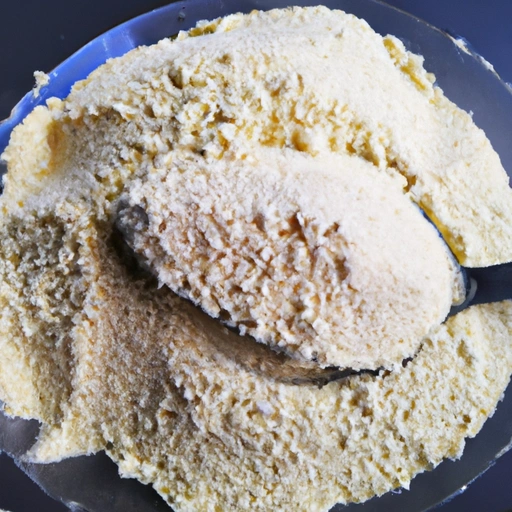Quinoa Flour
Description

Quinoa flour is a type of flour made by grinding quinoa seeds into a fine powder. It has gained popularity as a gluten-free alternative to traditional wheat flour, appealing to those with celiac disease or gluten sensitivity. Quinoa flour is not only gluten-free but also high in protein and fiber, making it a nutritious addition to any recipe. It can be used in both sweet and savory dishes and is easily adaptable to a wide range of culinary applications.
Common uses
Quinoa flour is commonly used in the preparation of gluten-free bread, pancakes, muffins, and other baked goods. It is also used to thicken soups and sauces and can serve as a coating for fried foods. Its mild, nutty flavor complements a range of ingredients and cuisines.
Nutritional value
Calories
Quinoa flour contains approximately 400-420 calories per 100 grams (3.5 oz), or about 120 calories per 1/4 cup (30 grams).
Protein
With around 14-16 grams of protein per 100 grams (3.5 oz), quinoa flour is an excellent plant-based protein source.
Fat
The flour contains about 6-7 grams of fat per 100 grams (3.5 oz), with a balance of monounsaturated, polyunsaturated, and saturated fats.
Carbohydrates
Approximately 60-70 grams of carbohydrates are present in 100 grams (3.5 oz) of quinoa flour, including a significant amount of dietary fiber.
Vitamins
Quinoa flour is a good source of B vitamins, particularly B6, thiamin (B1), and riboflavin (B2), essential for energy metabolism.
Minerals
This flour is rich in minerals such as magnesium, phosphorus, potassium, and iron, which are vital for overall health.
Health benefits
Quinoa flour offers numerous health benefits. Its high fiber content can aid in digestion and help maintain a healthy weight by promoting feelings of fullness. The protein in quinoa is a complete protein, containing all nine essential amino acids that the body cannot produce on its own. Moreover, the presence of antioxidants and anti-inflammatory properties contributes to overall wellbeing and can reduce the risk of chronic diseases.
Potential risks
While quinoa flour is generally safe for most people, some may experience allergic reactions. Additionally, it is important to integrate quinoa flour into a balanced diet to avoid excessive calorie intake. As with any high-fiber food, it should be introduced gradually to prevent digestive discomfort.
Common recipes
Quinoa flour can be used in a variety of recipes, including gluten-free bread, pizza dough, cakes, cookies, and pastries. It can also serve as a thickener for soups and gravies.
Cooking methods
This versatile flour can be incorporated into recipes using standard baking and cooking methods. It's often blended with other flours to improve texture and is suitable for use in both conventional and convection ovens, stovetops, and other kitchen appliances.
Pairing with other ingredients
Quinoa flour pairs well with nuts, seeds, fruits, and spices. It can enhance the nutritional profile of smoothies, yogurts, and oatmeal when used as a supplemental ingredient.
Summary
Quinoa flour is a nutrient-dense, gluten-free flour alternative with a rich history dating back to the Incas. It's adaptable in many recipes and offers a wealth of health benefits, including being a complete protein source and rich in fiber and minerals. While it's generally safe for consumption, as with any food, it should be consumed in moderation and introduced gradually into the diet.